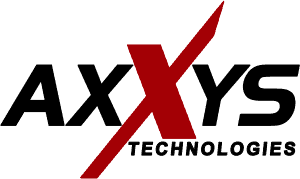Cloud computing has become foundational to modern business. For those operating in regulated industries or handling sensitive data, meeting cloud compliance standards is a priority. And as more organizations migrate data and workflows to the cloud, the need to meet and understand compliance obligations has taken on new urgency.
When it comes to cloud security compliance standards, different industries have different requirements. So, too, do different data types. Add in different applications with different compliance needs and suddenly using the cloud may not seem so straightforward and simple.
This post will break down the most relevant cloud computing standards and compliance requirements, explain the challenges businesses face, and offer practical guidance for north Texas small businesses looking to achieve and maintain cloud compliance.
Understanding Cloud Compliance
Cloud compliance refers to the practice of establishing that a company’s use of cloud services aligns with applicable laws, regulations, and industry standards. These rules govern how data is stored, accessed, processed, and protected within cloud environments. Compliance in the cloud is a shared responsibility between the provider and the organization using the service.
Why Cloud Compliance Matters
Beyond penalties, poor compliance practices can expose data to breaches or unauthorized access. Regulatory bodies expect businesses to know where their data resides and how it’s protected. Customers, partners, and regulators all expect accountability. Businesses that meet these expectations are in a better position to grow, compete, and retain trust in an increasingly digital market.
As a result, for small businesses, cloud compliance isn’t just a box to check. It’s essential for survival, growth, and credibility in a competitive market. Consider the following reasons that even small businesses must take cloud compliance seriously.
Customer Trust and Reputation
Small businesses often rely heavily on trust to compete with larger, more established firms. Failing to comply with data protection regulations, even unintentionally, can lead to customer churn, reputational damage, and loss of future business. For example, healthcare providers must utilize HIPAA compliant cloud based storage. A single misstep, such as storing patient records in a non-compliant cloud system, could lead to fines and a loss of patient confidence.
Financial and Legal Risk
Cloud compliance challenges can result in regulatory penalties that can be devastating for small businesses. Unlike large corporations, small companies may not have the resources to recover from fines or legal battles. GDPR violations, for instance, can cost up to 4% of annual global revenue. A U.S.-based eCommerce business that unintentionally collects personal data from European customers without proper consent may be liable, even if it never physically operates in the EU.
Contract and Partnership Requirements
More enterprise buyers, partners, and even local governments now require proof of compliance before doing business. A small SaaS startup serving financial clients may need to demonstrate SOC 2 or PCI DSS compliance to close deals. Without meeting cloud compliance requirements, they may be disqualified from lucrative opportunities.
Insurance and Liability Coverage
Cybersecurity insurance policies increasingly demand that policyholders meet compliance requirements. Failure to do so can void coverage in the event of a breach. A small professional services firm using cloud storage to manage client contracts might be denied a claim if the breach occurred due to non-compliant storage practices.
Operational Maturity and Long-Term Growth
Building a foundation of compliance early helps small businesses scale confidently. Compliance frameworks promote better data governance, clearer documentation, and more consistent security practices. These operational benefits improve efficiency and reduce chaos as teams grow and adopt more systems.
Maintaining cloud compliance also supports internal standards for data governance. It promotes structured data management, better risk mitigation, and operational transparency. For businesses, compliance is as much about protecting data as it is about sustaining long term viability.
Key Regulations and Standards in Cloud Compliance
Several major regulations affect how organizations must manage data in the cloud. Each carries specific obligations and applies to different sectors.
General Data Protection Regulation (GDPR)
GDPR applies to any business that handles the personal data of European Union residents. It places strict requirements on how data is collected, stored, and shared, regardless of where the company is located. Organizations must guarantee that any cloud service they use follows GDPR principles, including data minimization, user consent, and breach notification.
GDPR’s reach is global. Even U.S. based companies must assess their exposure to GDPR’s cloud compliance regulations if they interact with EU clients or partners. Failure to comply can result in penalties based on global revenue.
Health Insurance Portability and Accountability Act (HIPAA)
Cloud computing and HIPAA compliance can be challenging to navigate. HIPAA applies to healthcare providers, insurers, and their business associates who manage patient health information. When using cloud services, these entities must take steps to protect patient data. HIPAA mandates data encryption, access controls, and the execution of business associate agreements (BAAs) with cloud vendors.
Cloud providers hosting protected health information (PHI) must demonstrate adherence to HIPAA safeguards. Businesses that neglect to align with cloud security best practices for HIPAA compliance risk patient trust, regulatory fines, and potential data loss.
Sarbanes-Oxley Act (SOX)
SOX targets publicly traded companies and requires controls over financial reporting and data integrity. Cloud-based systems involved in financial reporting must include mechanisms for secure data handling, audit trails, and user authentication. Non-compliance can lead to legal consequences and reputational damage.
For financial departments using cloud-based accounting or reporting tools, ensuring those tools are SOX-compliant is a necessary part of the compliance strategy.
Payment Card Industry Data Security Standard (PCI DSS)
PCI DSS governs how businesses handle credit card information. It concerns any organization that stores, transmits, or processes payment card data. Cloud systems used for payment processing must enable data encryption, access restrictions, and regular security assessments.
Choosing cloud providers that meet PCI standards helps businesses maintain payment security and avoid penalties from card networks or financial institutions.
Together, these regulations define how cloud compliance is shaped across industries. Each one carries its own scope and expectations, but all share a common goal: protecting sensitive data in the cloud.
Challenges Businesses Face in Achieving Cloud Compliance
Meeting cloud compliance requirements can be confusing. Businesses often encounter challenges that delay or complicate their efforts.
Data Sovereignty
Many regulations include provisions about where data can be stored and processed. These data sovereignty laws require businesses to keep data within specific geographic boundaries. When cloud providers operate global data centers, ensuring compliance with local data residency rules becomes difficult.
Businesses must understand where their cloud providers store data and whether those locations comply with jurisdictional laws. Not knowing this can lead to accidental violations and potential legal exposure.
Complexity of Regulations
Cloud compliance involves navigating overlapping and evolving regulations. Each regulation has unique technical and procedural demands. Without dedicated legal or compliance resources, businesses may struggle to interpret what is required and how to implement controls effectively.
Small and mid-sized businesses, in particular, may lack the internal capacity to track regulatory changes or evaluate their compliance position.
Vendor Management
Cloud service providers offer different levels of compliance support. Some provide robust documentation and controls; others leave more responsibility to the client. Businesses must ensure that their providers meet relevant regulatory standards and are willing to provide necessary audits, certifications, and contractual assurances.
Strategies for Navigating Cloud Compliance Requirements
Organizations in north Texas can take proactive steps to stay ahead of compliance obligations and reduce risk exposure. Here’s how businesses ensure cloud infrastructure meets compliance standards.
Conduct Regular Compliance Audits
Periodic audits help businesses identify gaps in their compliance programs and take corrective action before problems arise. Internal assessments should examine access controls, data flows, encryption practices, and vendor compliance.
Third-party assessments can also add credibility and provide expert insight. Regular reviews ensure that businesses stay aligned with current regulations and avoid lapses.
Implement Robust Data Encryption
Data encryption protects information from unauthorized access. Effective compliance strategies include encrypting data both at rest and in transit using industry-standard protocols. Encryption should extend across all cloud environments, including backups and archives.
Managing encryption keys securely is just as important. Businesses must control key access and rotate keys regularly to maintain security.
Develop Comprehensive Policies and Training
Clear internal policies establish expected behaviors, and training ensures that employees understand their responsibilities. This includes data handling, password hygiene, and incident reporting procedures.
Without consistent training, even well-designed compliance programs can fail due to human error or oversight.
Choose Compliant Cloud Service Providers
The compliance capabilities of a cloud provider should factor into vendor selection. Providers should offer clear documentation, undergo independent audits, and support security standards relevant to your industry. Review service-level agreements to ensure compliance responsibilities are well-defined.
Choose the right provider. Businesses that partner with reputable, transparent vendors are better positioned to meet their compliance goals.
Leveraging Technology Solutions for Compliance
Technology can reduce the burden of compliance and help businesses operate more securely.
Compliance Management Tools
Dedicated tools help organizations track regulatory requirements, generate audit logs, and monitor data access. These platforms centralize compliance-related tasks, making it easier to manage across multiple cloud environments.
Some tools offer dashboards that track key performance indicators, flag risks, and streamline documentation. This enables teams to respond quickly and reduce the chance of oversight.
Automation
Automation improves consistency and accuracy. Tasks like log collection, access provisioning, and policy enforcement can be automated to reduce human error. Automated alerts can also identify policy violations in real time.
By replacing manual workflows with automation, businesses free up resources and enhance their ability to maintain compliance.
Integration with Existing Systems
To be effective, compliance tools must integrate with current IT infrastructure. Tools that connect with identity management systems, endpoint protection, and network monitoring platforms create a unified view of compliance.
Integration also reduces duplication of effort and ensures that compliance is not treated as an isolated function, but as part of everyday operations.
Closing Thoughts
Cloud compliance is an ongoing commitment. Understanding regulations, addressing the practical challenges, and implementing sound strategies all play a role in keeping businesses secure and trustworthy.
Ready to assess your organization’s cloud compliance? Contact Axxys Technologies to determine where improvements may be necessary. Axxys Technologies is committed to helping businesses adopt proactive strategies and leverage the right technology to protect the data that fuels their work.








